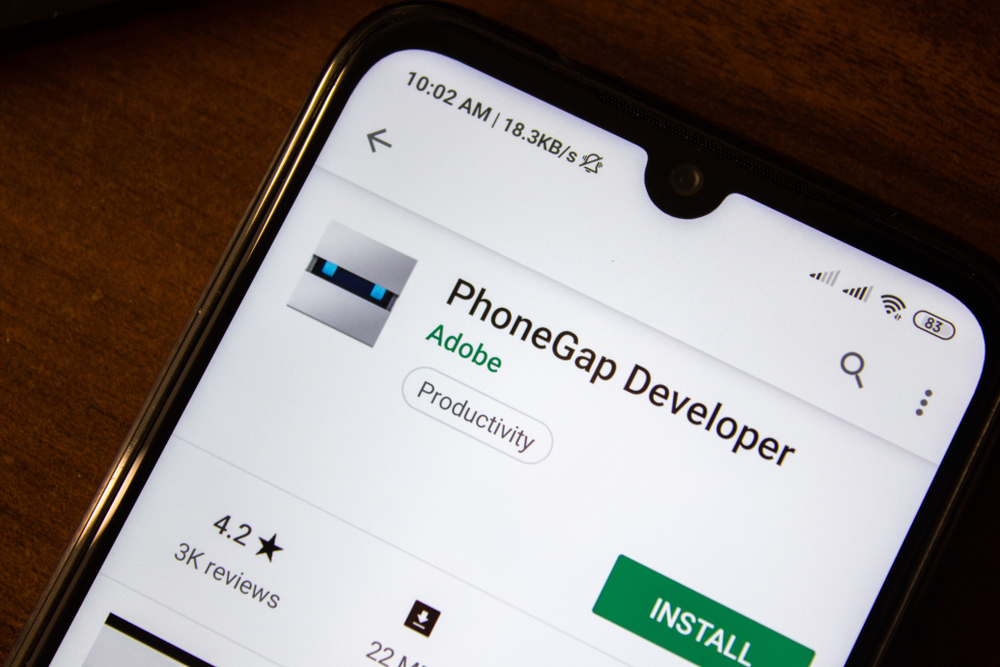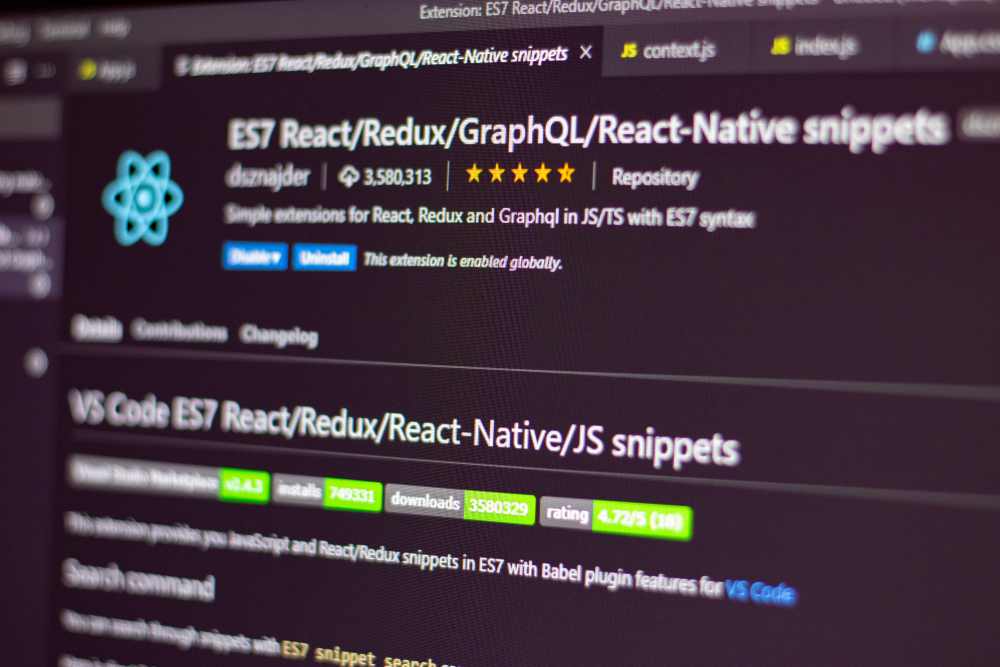Since 2008 when the PhoneGap was initially introduced as a toolkit, supporting multiple platforms development, the world of mobile apps has drastically changed. The invention of Progressive Web Apps (PWAs) gave developers an upper hand in bridging the gap between two different technologies. Namely, web and native apps of mobile devices. The need for employing PhoneGap has faded away, as more powerful and modern frameworks are replacing it. In the light of these events, Adobe announced the closure of the PhoneGap venture and stopped servicing the PhoneGap Build. And although they ended investing in Apache Cordova, developers are encouraged to use this open-source fork’s toolkit or switch to another framework. The following article describes all alternatives proposed by Adobe and explains why some of them are better than the others. But let’s start from the beginning.
What is PhoneGap, and how it contributed to the world of web and native apps?
Originally PhoneGap has been designed as a framework for developing apps that could support multiple platforms. It is a huge gain because a developer could build an app using HTML, JavaScript, and CSS by employing one codebase only. This single code approach has become the cornerstone of modern mobile app development. It ensures app compatibility with different mobile platforms. There are about a dozen of such platforms, and each utilizes a different codebase. That means that an app written for one of the platforms can’t run on the others. A developer has got to build several adaptations of an app for several platforms if they want to cover as many devices as possible. However, it is expensive and time-consuming. Therefore app developers came up with the idea of creating a programming language that would kill two birds with one stone. Though in the case of PhoneGap, it kills more than just two. With its help, you could write a program compatible with such widely used platforms as:
- Blackberry,
- Symbian,
- Android,
- WebOS,
- iOS.

What made PhoneGap so popular?
Originally the framework has been named Apache Cordova by its developer Nitobi. Having realized the opportunities of this innovation, Adobe bought out Nitobi and adjusted the name to PhoneGap. Evidently, the name itself describes the benefits of employing the framework as the idea behind it presented a solution in bridging web and device apps. As with any other software development tool, PhoneGap had its pros and cons. The following features attracted app owners and developers the most.
- Uniformity across different platforms. Usually, an app created for one particular platform looks different on the others. However, an app written in PhoneGap looked the same on all supported platforms. Moreover, it needed only one codebase, which significantly reduced the time and workload. What is PhoneGap in terms of development process and costs? It is a substantially free framework powered by such a widely used and respected platform as Cordova.
- An open-source framework that is backed up by Adobe. Since Apache Cardova’s purchase by this recognized corporation, it has been getting all the needed resources and support. That means an app can be developed with a reliable framework that provides rich UI libraries. Which in turn helps to resolve such issues as viewing web pages formerly designed for large screens.
- Cordova community full support. As Cordova development relies mostly on easy-to-use language (CSS, HTML, JavaScript), it unites a large number of developers who are willing to share their knowledge and expertise. Whenever you face a problem working with the Cordova framework, you can undoubtedly find somebody who has the right solution for it already. Besides, Cordova is great for developing web applications due to its significant flexibility.
- Fewer requirements for developing expertise. Any developer who mastered HTML, JavaScript, and CSS languages could write a native-looking app. PhoneGap was designed to retrieve the device’s native facilities and ensure excellent UX. Because that framework retrieved native APIs of a device with ease, an app could use its camera and other built-in features. Which in turn provided a better user experience.
The most widely used app built on the PhoneGap base
As we mentioned earlier, mobile app developers often face difficulty with creating a user interface that can handle bulky web pages designed for computer screens. On a smaller screen, such options as scrolling and viewing different sections of a webpage may become problematic. But PhoneGap could enhance viewing options for various target groups by improving the app’s user interface interaction with web pages. Here are some examples of when it was used to write a user-friendly interface for mobile applications.

Wikipedia
One of the most used encyclopedias was designed with the help of that toolkit. And thanks to the Cordova platform, the app runs smoothly on most mobile gadgets and provides a satisfactory viewing experience to end-users.
DHS Program
Being a huge database, Demographic and Health Survey provides a lot of various materials concerning different populations’ health-related data. Adobe has used this framework as a keystone for developing that application.
Paylution
What is PhoneGap’s contribution to electronic and online payment systems? It is another example of successful usage of the PhoneGap intended to enhance user experience while employing web applications. Basically, it presents a technology designed to replace the old-fashioned technique of writing a cheque by making direct payments. It utilizes engraved HyperWallet technology and provides a reliable tool for international payments.
TripCase
As mobile devices became a rich source of information for users, developers built more and more applications that make our life easier. This one proved to be an effective resource for users while traveling.
What should the owners of apps built on the PhoneGap’s base do?
Though Adobe stopped the development of the product and ceased PhoneGap Build service in October, its fork for that project is still functioning. Even deprived of further investments, Apache Cordova continues to serve as a handy tool for developers. Engineers are encouraged to build locally and employ its features instead of PhoneGap-specific workflows. If you don’t want to stick with the Cordova platform anymore, there are several other options to pick:
- React Native,
- Flutter,
- Monaca,
- Framework7,
- NativeScript,
- Ionic Capacitor,
- Progressive Web Apps.
Among the suggested opportunities, the first two performed much better as compared to Phone Gap itself and its closest surrogate Ionic Capacitor. In the constantly evolving world of mobile apps, they are the most discussed frameworks. That is why further in the article we will look closer into the advantages of these two frameworks supporting multiple platforms.
What React Native and Flutter can offer to developers?
In the case of PhoneGap, a developer could access the device’s native features via a specific container that tapped into the gadget’s API. That container was written up using simple program languages like JavaScript, HTML, and CSS. However, both mentioned toolkits have been developed with a different approach to mobile app development. Though these two frameworks are very similar, they employ different technologies in accessing the native feature of a device. Therefore, it will be wise to examine each of them separately, starting with React Native as it appeared on the market first.

Pros of using React Native
The framework was specifically designed to aid developers in solving the biggest challenge in the app development process. That comes to struggling with the diversity of mobile platforms utilized in various devices. To cover as many users as possible, your app has to maintain the most popular ones. Statistics and surveys indicate that the most usable and famous among them are Android and iOS. React Native allows building an app that smoothly functions on several different platforms, including the two mentioned previously. What is PhoneGap offering to developers? The same cross-platform development, but as the project is outdated and almost dead, it is better to move to another option. And React Native is one of them because it excels in many ways.
- It uses JavaScript which in turn has such benefit as a large community of developers with a constantly extending solution database. That is why you can build an app with an attractive interface that ensures fast performance.
- It operates via the native features of the device so an app can access all necessary functions. You can pick from a host of external UI toolkits as well.
- It saves time and workload noticeably and allows developers to deliver quality projects ahead of time.
Pros of using Flutter
This SDK (Software Development Kit) resembles React Native in the way of creating a beautiful user interface without reducing the speed of performing. React Native is Facebook’s answer to the constantly growing demand for multiplatform solutions. Flutter is Google’s creation and has the full support of its owner. Besides, its community is increasing in number as more Flutter based apps are being published in Google Store and Google Play. Like its predecessor, Flutter allows writing native-looking apps that are supported by multiple platforms. Moreover, it has some additional features that successfully help to conquer the mobile apps market.
- It utilizes a unique program language introduced by Google, which is object-oriented and can enhance the performance rate up to fifteen percent.
- It has ample backup from the owner and a fast-expanding community of devoted developers all over the world. You can always reach out for resources to the Material Design team.
- It is supplied with multifunctional widgets that are customizable and ready-to-use. They allow building a custom app design if a developer needs such a tool for apps development. In case you prefer to work with ready-to-go UI elements, they are also available in the framework.
What is PhoneGap’s attractiveness for developers? Uniformity across different devices and support for various mobile platforms. React Native and Flutter offer a developer the same benefits and even more because their communities are persistently growing in number, and there are rich resources available online. Looking for a partner to share the challenges of migrating your PhoneGap based app to another framework? NIX Solutions’ development team has extensive experience in working with both of these frameworks. We help businesses from various domains to handle their challenges.
